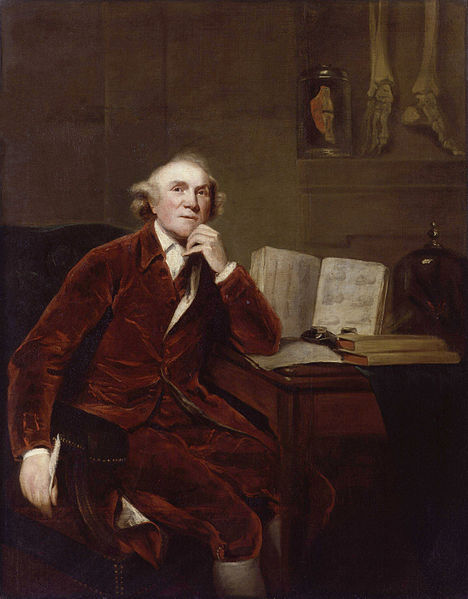Instead of pink-washing the Ball to show my support for breast cancer awareness, I thought we'd take a look at how a woman of the Regency era may have confronted this disease.
To begin, cancer has been recognized since ancient times. The oldest recorded observations of cancer come from Egypt, in approximately 1600 BC. The Greek physician, Hippocrates, theorized that cancer was caused by an imbalance in the four humors: blood, phlegm, yellow bile and black bile. An excess of black bile was the cause of cancer, Hippocrates believed. The second century Roman doctor, Galen, agreed with the Hippocratic view and declared cancer to be incurable. He allowed that some breast cancers could be treated by the surgical removal of tumors, but since surgery itself carried grave risks--and because the cancer often returned--operations were rarely attempted.
Galen's writings remained medical gospel for more than a thousand years, his theories unchallenged. At the time of the Regency, many physicians, surgeons, and apothecaries still accepted the four humors theory of health, which is why blood letting was practically a national pastime for centuries.
 |
| More fun than cricket. |
In the seventeenth and eighteenth centuries, the involvement of underarm lymph nodes in breast cancer cases was discovered, although removing them during surgery was tricky business and not usually attempted.
By the mid-eighteenth century, modern-minded surgeons had abandoned the humors theory of cancer, and brainstormed new ideas. It was observed that sometimes multiple women in the same household developed breast cancer. This led to the conclusion that cancer is contagious. Cancer patients were isolated in hospitals to prevent the spread of the disease.
 |
| Did you hear about Old Man Hunter? He's got this crazy idea about mothers passing a predisposition for breast cancer to their daughters. Did you ever??? |
So, what could a Regency lady expect when this terrible disease struck? If she had the financial resources to choose treatment, she would decide whether to first consult a physician or a surgeon (I previously explored the British medical hierarchy here.) A physician would not conduct a physical exam, but he would suggest a course of medication.
There also arose a subset of physicians and apothecaries who claimed to be able to cure cancer with their proprietary concoctions. Arsenic was a popular choice, the idea being to fight fire with fire--or in this case, poison with poison. A recipe called Plunkett's Poultice included the following ingredients: Crow's foot, dogfennel, brimstone [sulfur], and white arsenic. The ingredients were ground together into a powder, then mixed with an egg yolk to make a paste, which was applied to the cancer site and covered with bandages. As you might imagine, arsenic-laced medications did nothing to cure cancer, and actually hastened the deaths of quite a few patients.
Surgery was also an option, and the area of medicine which showed the most success and progress in the late 1700's and early 1800's in the treatment of breast cancer. Unfortunately, surgery was carried out without the benefit of anesthesia or effective pain relief medications. Post-surgery infections were common, and blood loss during an operation was an additional risk. Lumpectomies and mastectomies were performed to ensure what John Hunter called the removal of the "whole disease." He urged close inspection of the removed tumors to ensure they were intact. Regarding a particular case, he said, "I considered that the bad success arising from amputation of the breast arose from not taking away enough." A post-op inspection of the excised tumor revealed it was not intact. Two weeks later, another surgery was performed to remove the remaining cancer.
 |
| Okay, a little bit of pink. |
The Regency breast cancer patient had limited options for treating her disease. As today, some of the brightest minds in medicine and science worked diligently to find effective treatments, while charlatans preyed on the vulnerable. Our chances of successfully fighting this disease are much greater now thanks to the work of John Hunter, Henry Fearon, and all the other surgeons who developed pioneering surgical techniques. But as Mr. Fearon said, early detection and treatment is the key to success.
Consider yourself aware.

Excellent history Ms.Elizabeth!
ReplyDeleteThanks, Amanda! This was a really interesting topic to research.
ReplyDeleteHow sad that we've come so far, but not. <3
ReplyDelete